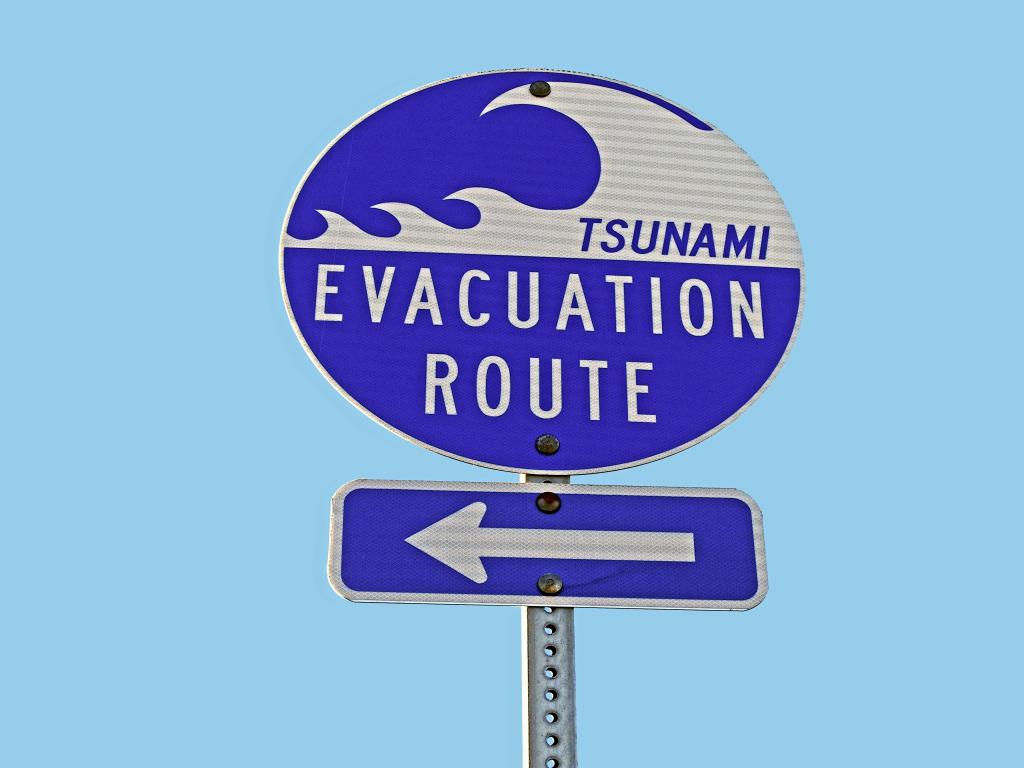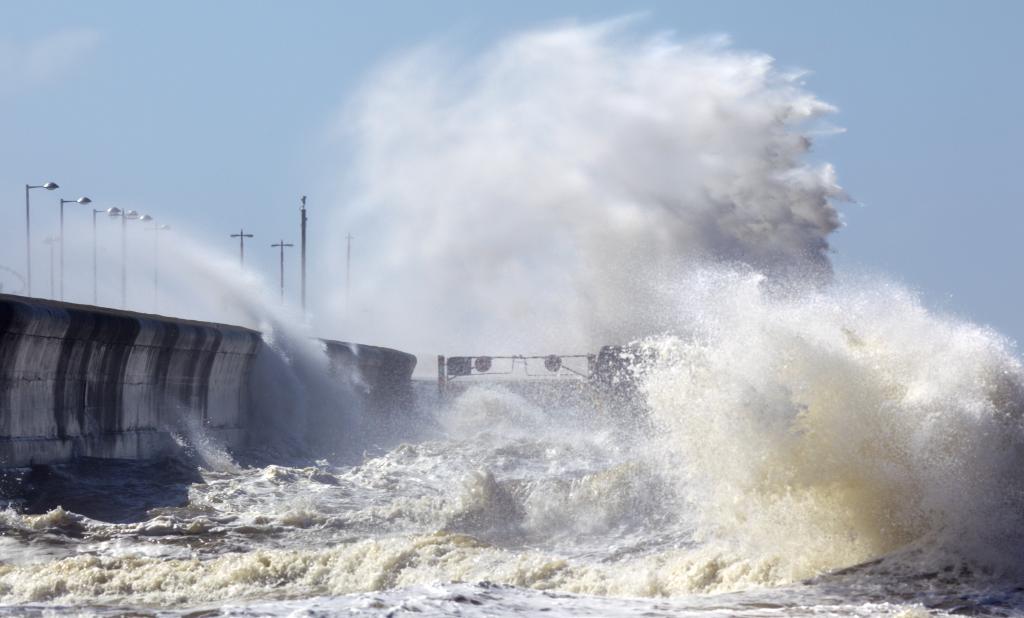by Dr Angela Hibbert, Dr Mike Clare, Dr James Hunt, Dr Isobel Yeo, Prof Mohammad Belal

Remember, Remember, the fifth of November.
In the UK, 5th November is commonly associated with Guy Fawkes’ Gunpowder Plot, but internationally it has a very different connotation.
Since 2016, World Tsunami Awareness Day (WTAD) has taken place annually on 5th November, with events, activities, and drills around the world to raise tsunami awareness and share innovative approaches to risk reduction. The date was chosen in commemoration of the actions of Goryo Hamaguchi, a leader in a small village in Japan who, on 5th November 1854, set fire to sheaves of newly harvested rice to guide fellow villagers to high ground in the darkness, so that they could escape a huge tsunami triggered by a magnitude 8.4 earthquake that had struck the Kii Peninsula.
Tsunami Warning System
This year marks the 21st anniversary of the devastating Boxing Day tsunami of 26th December 2004, which struck the Indian Ocean and caused more than 227,000 deaths in 15 countries. This devastating event galvanised two decades of cooperation amongst the Intergovernmental Oceanographic Commission (IOC) and its partners to develop a global tsunami warning system that now covers the Pacific, Indian Ocean, Caribbean, Northeast Atlantic, and Mediterranean, supported by networks of sensors, tide gauges, and regional analysis centres facilitating rapid coordination and dissemination of information amongst experts and member states.

As part of this, scientists and engineers at the National Oceanography Centre (NOC) have been working to install tide gauges in the UK and overseas, but despite these improvements in tsunami monitoring and detection, it is important that society does not become complacent about tsunami risk. NOC’s Dr Angela Hibbert, the UK’s Tsunami National Contact, explains why: “Whilst tsunami risk to the UK is low compared to seismically-active areas such as the Pacific Ocean, tsunamis have affected UK waters in the past. For example, this year marks the 270th anniversary of the Lisbon earthquake and tsunami which occurred on the Azores-Gibraltar fault line on 1st November 1755. This event destroyed the city of Lisbon and generated a tsunami that reached Cornwall and the West Coast of Ireland in around four hours.
“Reassuringly, earthquakes like this are monitored by the tsunami warning centres of IOC, but there are other sources of tsunamis such as underwater landslides, terrestrial landslides that enter the ocean, volcanic eruptions, human-made explosions and ice calving. All of these are less easy to detect. It is therefore important for the general public to be aware of the warning signs of tsunamis when in coastal areas in the UK and overseas and to understand what action to take.”
Improving detection of tsunamis
Other scientists at NOC are working hard to improve the detection of these non-earthquake induced tsunamis and thereby reduce the risk to coastal populations. Dr Isobel Yeo, a volcanologist at NOC, comments: “The 2022 eruption of Hunga Volcano in the South Pacific, created a series of damaging tsunamis that locally impacted coastlines in Tonga but that were also felt on the other side of the Pacific Ocean. Such explosive events are hard to predict, and remote and submerged volcanoes remain unmonitored – meaning that early warning systems are absent in some of the most vulnerable parts of our planet.”
Large seafloor displacements caused by underwater landslides can also trigger major tsunamis – and are sometimes known as ‘silent tsunami’ because they are not detected by seismic monitoring networks (unlike earthquakes or volcanoes). Our understanding of these events remains limited due to a lack of direct observations, so scientists typically rely on geological records to understand their past behaviour.
Research led by NOC has shown how underwater landslides can trigger tsunamis, and that understanding landslide volume, speed and direction is key to determining the magnitude of the tsunami.
Professor Belal leads the research and development of fibre optic sensing in seafloor cables. He adds: “Dense space-time observational efforts powered through remote interrogation of optical fibres in the global network of seafloor cables combined with novel signals processing & AI-driven analytics, with view to detect subtle underwater disturbances that may precede tsunamigenic events, promises a truly comprehensive and consistent global scale real-time monitoring of acoustic and mechanical signals, without deploying additional instruments.
“Use of these innovative approaches, recently demonstrated through observations made at offshore Catania, represent a major step towards a low-carbon, reliable, continuous ocean monitoring network, strengthening early-warning capabilities for tsunamis and other marine hazards. Furthermore, when viewed in combination with geological and seismic studies, fibre-sensing technologies and their use on seafloor cables of telecommunications and energy are transforming how we observe, understand, and prepare for tsunamis - helping protect vulnerable coastal communities worldwide.”

What next?
NOC research continues to focus on better understanding the risks posed by tsunamis to coastal communities, but despite major progress, we cannot afford to be complacent.
Nearly 700 million people still live in high-risk coastal areas. With rising sea levels and intensifying climate events, strengthening tsunami preparedness and resilience is more crucial than ever. Therefore, through the Tsunami Ready programme (now active in 43 countries), and within the framework of the UN Decade of Ocean Science (2021-2030), the IOC and the United Nations Office for Disaster Risk Reduction (UNDRR) are helping coastal communities conduct evacuation drills, strengthen preparedness using twelve key indicators, and promote the #GetToHighGround campaign, aiming for all at-risk communities to be tsunami ready by 2030.
In fact, during 2024-25, Dr Hibbert has been supporting the UK Overseas Territory of Anguilla in its USAID-funded project to achieve Tsunami Ready recognition. The shared ambition amongst the IOC-UNESCO, its members and collaborators is to ensure that by 2030, 100% of at-risk coastal communities are Tsunami Ready.
IOC-UNESCO tsunami warning signs and actions
FEEL - A very strong or long earthquake? Local earthquakes may cause tsunami waves to arrive within minutes after the shaking stops.
SEE - A sudden rise or fall of sea level? The ocean recedes as waves build, exposing reefs, rocks, and fauna on the sea bottom.
HEAR - A strange or loud sound coming from the sea? Approaching tsunami often create a loud “roaring” sound similar to that of a train or jet aircraft.
RUN - To higher ground or as inland as possible. Don’t wait for official evacuation orders, leave low-lying coastal areas immediately.
About the authors
Dr Angela Hibbert is a sea level scientist at NOC and the UK’s Tsunami National Contact, promoting tsunami resilience and awareness in the UK and its overseas territories.
Dr Mike Clare is a marine geoscientist working on hazards assessments across the South Pacific and Caribbean in relation to underwater landslides and volcanic processes.
Dr Isobel Yeo is a marine volcanologist who has worked on coastal and submerged volcanoes across the planet, assessing the threats they pose to coastal communities and offshore infrastructure.
Dr James Hunt is an expert in underwater landslides, applying a range of scientific tools to understand their triggers, frequency and behaviour.
Prof. Mohammad Belal is an atomic, molecular and optical physicist and leads the research in fibre optic sensing – using seafloor cables amidst other underwater configurations, to monitor the natural environment and to enhance hazards assessment.